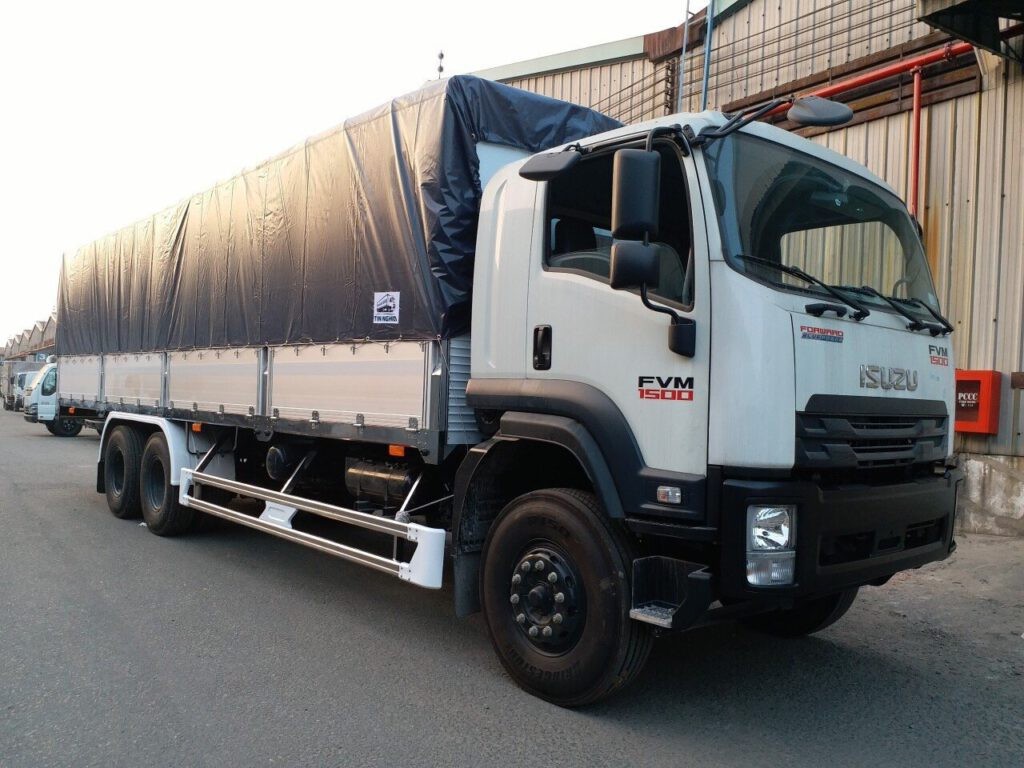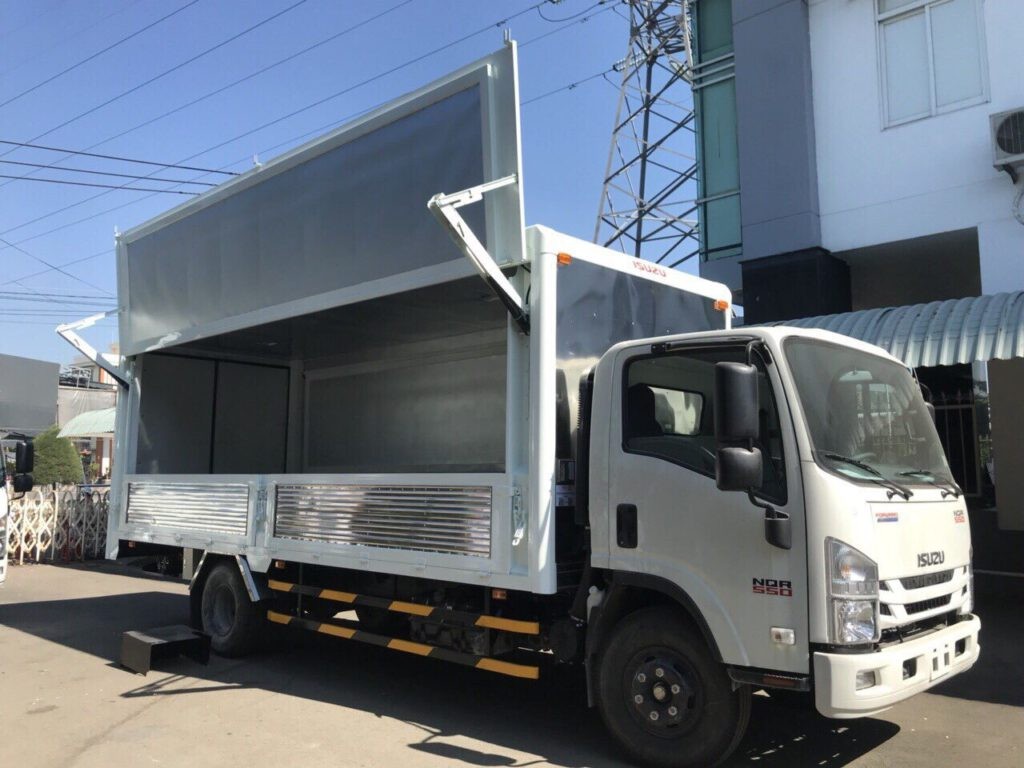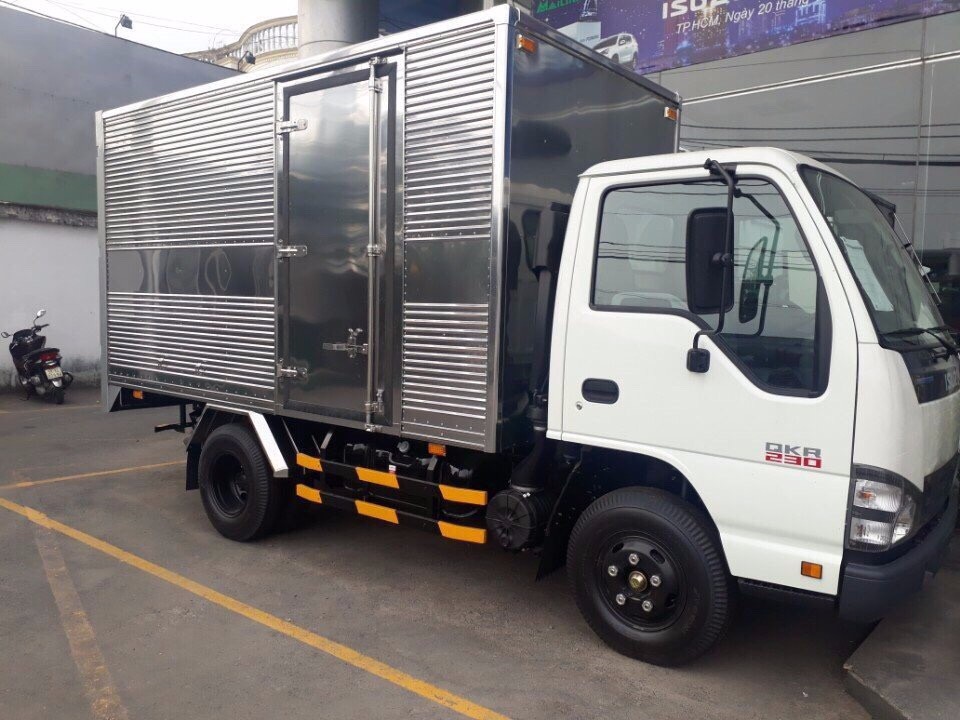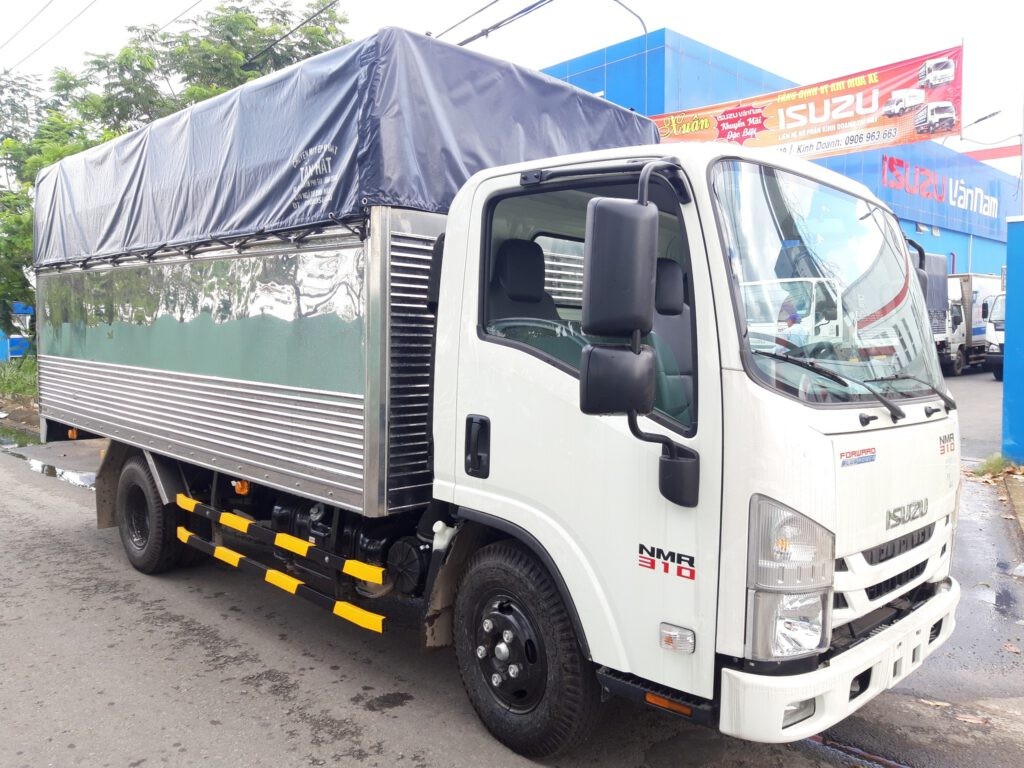To ensure safety and efficiency when operating a light truck, especially for new drivers, having comprehensive experience is crucial. Xe Tải Mỹ Đình has compiled the most practical light truck driving experiences to help you feel confident and safe on every journey. This article provides detailed and complete information, optimized for SEO to reach a broad Vietnamese readership.
 Isuzu 2.5-ton closed truck transporting various goods
Isuzu 2.5-ton closed truck transporting various goods
I. Common Situations and How to Handle Them
1. Dealing with Sun Glare
Sun glare is a common issue when driving light trucks long distances, especially on highways with few trees on bright sunny days. To minimize glare and ensure the best visibility, drivers should:
- Clean the windshield: Always keep the windshield clean and free of dirt to minimize light reflection.
- Use sunglasses: Polarized sunglasses are ideal as they reduce glare and increase contrast, making it easier on the eyes when driving in the sun.
- Sun visor: Install a transparent acrylic reflective sun visor with adjustable brightness to reduce the intensity of direct sunlight into your eyes.
- Reduce speed: When experiencing glare, visibility may be limited. Reducing speed gives you more time to react to unexpected situations.
2. Driving a Light Truck in Heavy Rain
Heavy rain is always a challenge for all drivers, especially when operating a light truck. To ensure safety when driving in heavy rain, keep in mind:
- Turn on low beam headlights: Increase the visibility of your vehicle to other drivers and help you see the road more clearly.
- Reduce speed: Wet roads reduce tire grip. Reducing speed helps prevent loss of control and skidding.
- Use windshield wipers and defrosters: Ensure wipers are working properly and use the defroster to maintain clear visibility through the windshield.
- Cover cargo: Check and ensure cargo is carefully covered to prevent damage from rainwater.
- Choose the middle lane: The middle lane is often less flooded than the sides of the road, helping the vehicle move more stably.
- Stop when the weather is too bad: If the rain is too heavy and visibility is severely limited, find a safe place to stop and wait for better weather.
Experience driving a light truck in rain: Maintain a safe distance from the vehicle in front, avoid sudden braking, and drive slowly with high concentration.
3. Handling a Light Truck Stuck in Mud
Getting stuck in mud is unavoidable when traveling on complex terrain or dirt roads. When a light truck gets stuck, stay calm and follow these steps:
- Do not try to accelerate: This will only cause the wheels to spin and sink deeper.
- Reduce tire pressure: If possible, reduce tire pressure to increase the contact area of the tires with the ground, improving grip.
- Find supporting materials: Use planks, wood, stones, or branches under the wheels to create traction.
- Ask for assistance: If you cannot resolve it yourself, ask for help from other vehicles to pull the truck out of the mud.
Note when towing: Use a soft cable or rigid bar of appropriate length. Tow slowly, avoiding strong jerks that could break the cable and cause danger. Ensure no one is standing near the cable during towing.
4. Driving in Fog and Handling Vehicle Fires
Fog and vehicle fires are the most dangerous situations drivers may encounter.
Driving in fog:
- Limit travel: The best advice is to avoid driving in dense fog.
- Turn on low beam headlights and fog lights: Fog lights have a distinctive yellow light that helps penetrate fog and improve visibility.
- Reduce speed to a minimum: Drive slowly to have enough time to react to unexpected situations.
- Maintain a safe distance: Increase the distance from the vehicle in front to avoid collisions due to limited visibility.
- Concentrate fully: Do not use the radio, phone, or do anything that causes distraction.
Handling a vehicle fire:
- Stay calm: Staying calm is key to handling the situation effectively.
- Stop and turn off the engine: Immediately stop the vehicle in a safe location and turn off the engine.
- Evacuate people and cargo: Quickly get everyone out of the vehicle and move cargo (if possible) to a safe place.
- Use a fire extinguisher: Use the fire extinguisher in the vehicle to put out the fire. If the fire is large, use other firefighting methods such as sand, soil, or wet blankets.
- Call fire department 114: If the fire is beyond your control, call 114 immediately for professional assistance.
Important note: Never use water to extinguish oil or fuel fires.
II. Principles of Light Truck Operation
1. Requirements for Light Truck Driving Profession
To legally work as a light truck driver, you must meet the following conditions:
- Age and nationality: Be a Vietnamese citizen or a foreigner legally residing in Vietnam, aged 21 or older.
- Driver’s license: Possess a B2 driver’s license or higher (depending on vehicle tonnage), vehicle registration, and vehicle insurance.
- Professional certificate and health: Have a professional light truck driving certificate and a specialized health certificate issued by a competent health authority.
- Occupational safety certificate: Have completed occupational safety training and been issued a safety card.
- Knowledge, skills, and experience: Have a solid understanding of road traffic laws, safe driving skills, and experience driving light trucks.
 Isuzu NPR flatbed truck carrying construction materials
Isuzu NPR flatbed truck carrying construction materials
2. Pre-Trip Vehicle Inspection
Before each trip, thoroughly checking the vehicle’s condition is crucial to ensure safety and avoid unexpected incidents. Items to check include:
- Technical systems: Brake system, steering system, clutch, steering system, exhaust pipe, safety latches, lighting system, signal lights, horn, windshield wipers.
- Tires: Tire wear, tire pressure.
- Cargo box: Dump body locking pins (for dump trucks), rear cargo box latches.
- Tools and supplies: Cargo straps/ropes, fuel, lubricant, coolant, fire extinguisher.
3. Principles for Loading and Unloading Goods
Loading and unloading goods must adhere to the following principles to ensure safety and efficiency:
- Park in designated areas: Park orderly in designated areas, wait your turn to load, avoid pushing and shoving.
- Ensure parking surface: When driving the vehicle to load from a hopper or excavator, calculate that the parking surface can withstand the weight of the vehicle and cargo.
- Loading position: The flow of goods must fall into the center of the cargo box.
- Loading time: Only load goods when the vehicle has come to a complete stop and the engine is turned off.
 Isuzu QKR closed truck carrying groceries
Isuzu QKR closed truck carrying groceries
4. Principles of Loading, Unloading, and Securing Cargo
Properly loading, unloading, and securing cargo not only ensures traffic safety but also protects cargo from damage.
- Load cargo evenly: Load cargo in the center of the cargo box to ensure vehicle balance.
- Sort cargo: Heavy items at the bottom, light items on top.
- Secure firmly: After loading, cargo must be carefully secured, and the cargo box doors closed tightly to prevent shifting or falling during transport.
- Correct payload: The amount of cargo must not exceed the vehicle’s permitted payload.
- Do not exceed dimensions: Cargo must not exceed the dimensions of the cargo box as regulated.
- Oversized load warning: In case of oversized or overlength cargo, warning signs must be displayed (red cloth during the day, red light at night).
- Wait for completion: Only leave the loading area when workers have completed the work and locked the cargo box carefully.
5. Adhere to Speed and Safe Distance
- Speed in restricted areas: Do not exceed 5 km/h within factory or industrial park premises.
- Speed on straight roads: 10 km/h on straight roads with unobstructed visibility.
- Going uphill: Use 2nd gear and do not change gears when going uphill.
- Safe distance: Maintain a minimum distance of 20m from the vehicle in front when traveling in the same direction.
6. Other Safety Principles
- Turn off engine when leaving vehicle: Turn off the engine, engage the handbrake, put the vehicle in gear, remove the key, and lock the doors when leaving the vehicle. Do not leave the vehicle when the engine is still running.
- Fueling safety: Turn off the engine when refueling. Ensure tire pressure is as specified.
- No unauthorized passengers: Do not allow people to get on or off or cling to the vehicle while it is moving.
- Safety with explosives transport: Vehicles transporting explosives may only stop in designated areas or deserted places.
- Proficient use of fire extinguisher: Master and proficiently use the fire extinguisher in the vehicle.
- Minimize accidents and respond: Minimize traffic accidents. If an accident occurs, provide first aid to victims and report to authorities. It is strictly forbidden to abandon victims.
 Experience driving an Isuzu 1-ton truck carrying goods in the city
Experience driving an Isuzu 1-ton truck carrying goods in the city
III. Things Absolutely Not to Do
- Carry people in the cargo box: Especially vehicles carrying explosives or flammable materials.
- Misuse personal protective equipment: Do not use or improperly use the provided personal protective equipment.
- Inspect or repair vehicle while loading: Only inspect or repair lifting mechanisms/vehicle components when the cargo box has been raised and safely supported (for dump trucks).
- Park on a slope: Do not park on a slope to rest or load goods. If parking is unavoidable, securely chock the wheels.
For more detailed information about Isuzu trucks and other light truck models, please visit Xe Tải Mỹ Đình.
Contact for consultation and support: 0909.117.525
Wishing you safe and successful driving!
